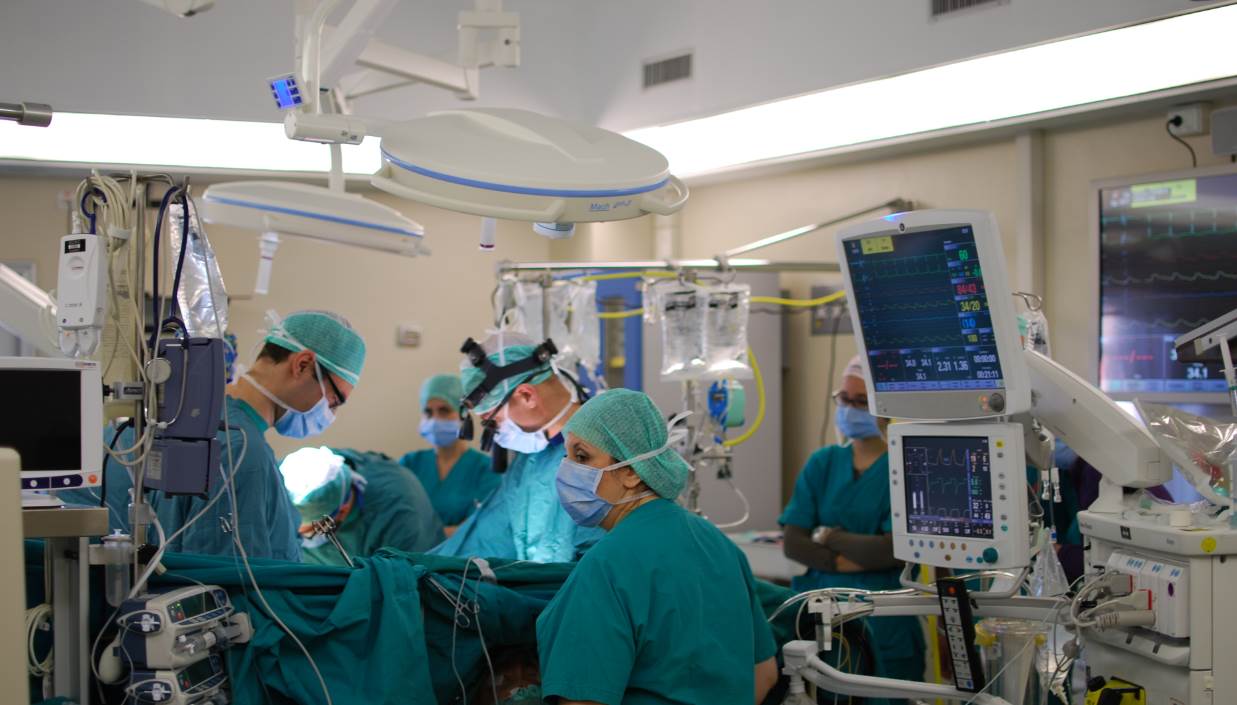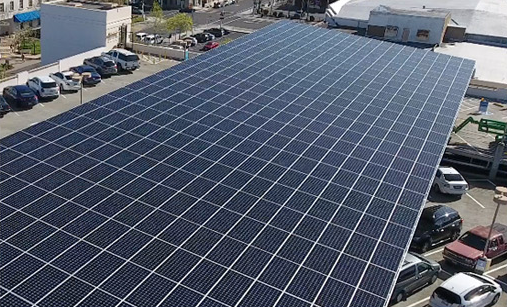
Photo: Pfree2014 | Creative Commons
When Hospital Power Fails
It’s hard to imagine a more mission-critical power user than a hospital. Hospital buildings require 24/7 heating, and cooling, and air-handling to maintain the comfort of their patients and staff, and electricity animates a constellation of hard-working devices that provide critical life support. Breathing machines, heart-lung bypass and blood circulation devices, pumps, incubators and dialysis equipment and many other critical systems must operate without fail to realize their life-saving value. Even a seemingly trivial matter such as temporary loss of lighting could place patients undergoing surgical procedures at unacceptable risk of adverse events. When a hospital loses power, it can be catastrophic. Consequently, hospital electrical systems must be consistently reliable, resilient, and safe.
That’s one reason that the conditions of power supply to hospitals and smaller operations like nursing homes are closely regulated; health facilities are required to have backup power systems that can function reliably during emergencies. Traditionally those systems have been backup diesel generators. But, during recent extreme weather events, like Hurricanes Sandy, Katrina, Harvey and Irma – just to mention a few – these systems have often fallen short. Often located below grade in basements, generators in hurricane-struck areas have promptly flooded under heavy rains or storm surge and failed to work properly. During hurricane Irma, over 200 hospitals and other health facilities lost their power. Of those, many were able to continue operating normally but only had a few days of available fuel reserves. Would rescue agencies be able to make new fuel deliveries in time? In many cases, the answer was no.
Meanwhile in California, which has recently experienced several of its worst wildfire seasons ever, many health facilities that didn’t face direct fire danger were stranded when utilities cut electrical power to threatened areas for safety reasons. Pacific Gas and Electric (PG&E) has issued written warnings that they may elect to cut power to large geographic areas in the future when wildfires arise – leaving hospitals with no options but to run using diesel generation or evacuate.
Complex Hospital Campuses Challenge Emergency Power Providers
As medical facilities evolve in size and complexity, many have grown from individual hospital buildings to large campus organizations. Providing high-quality, uninterrupted electrical power – as well as energy for heating and cooling – to an entire campus in the case of a natural disaster is a new challenge for those working in healthcare energy infrastructure. This is another reason that weather-related natural disasters are prompting many responsible officials to take a second look at the policies affecting power supplies for health care facilities.

Charge Bliss Project is the First Renewable Energy Project to Meet Stringent Hospital Safety Requirements
Until just recently, complex regulations governing emergency power backup and the requirement for high-quality, fail-safe power have made hospitals leery of investing in new technologies like renewable energy, battery storage and microgrids.
But, that attitude could be changing because of a breakthrough project in Richmond, CA, where a new $4.8 million renewable energy microgrid is now powering the Kaiser Permanente Richmond Medical Center. Not only is the microgrid managing diverse, resilient energy systems that could supply backup power in case of an emergency, it’s also saving the facility money every year in reduced energy costs.
Dr. David Bliss, who fittingly happens to be a pediatric surgeon as well as a renewable energy expert, co-founded Charge Bliss, which initiated and developed the project. He says the solar+storage microgrid has the potential to reduce Kaiser’s energy costs by 49% every year, a reduction in 350,000 kWh of utility usage and savings of over $140,000.
The microgrid components include a 250kw solar PV structure utilizing SunPower modules (on top of an existing parking garage), 1 MWh battery storage (Samsung) system, Princeton Power inverters, LED lighting, and a NextGen Microgrid Controller custom designed by Charge Bliss. The team used HOMER Pro early on in the process to model the solar and the batteries, Bliss says.
The microgrid is able to “island” itself from the main electric grid during emergencies and provide at least three hours of backup power, a feature that will improve reliability to the hospital during a crisis situation. This is the first time in California, and perhaps the nation, that a renewable energy system has been interconnected to hospital emergency power.
“We engineered our own controller from scratch,” says Bliss, explaining that the California Energy Commission (CEC), which funded the project, wanted to see the design of a novel control system. The CEC says the project may “set a precedent for hospitals.” The new controller takes into account utility tariffs, available solar production, the state of charge of the batteries, site load, and other inputs, and it calculates when it’s financially advantageous to use solar energy to charge batteries or power the facility. That means it’s responsible for the economic performance of the system, controlling demand response and peak shaving – ensuring that power is drawn from the grid when it’s least expensive to do so. The controller also has to manage the provision of absolutely reliable, consistently high-quality power at all times, explains Bliss, because, “delicate machines have to operate in tight tolerances.” He says that while hospitals are thought to have relatively flat demand because they operate 24/27, “it’s more nuanced when you get into the details. Buried inside these load curves is a fair amount of variation, and this required some special tuning of the microgrid.”
What Made The First Hospital Renewable Energy Microgrid Possible?
Bliss says that the most innovative aspect of this microgrid project was the opportunity to work closely with the California agency that regulates hospital safety – the Office of Statewide Health Planning and Development (OSHPD). Charge Bliss began collaborating with the agency in the earliest stages of the project to ensure that their designs would be compliant with health facility safety regulations, including stringent earthquake safety rules.
The Charge Bliss microgrid is unique in that it’s the first of its kind to be connected to the vital Life and Safety Branch of the hospital power system. That allows the facility to support critical systems when utility power is inadequate or unavailable as compared to conventional systems that must shut down under these circumstances.
Bliss says it wasn’t easy convincing a hospital to partner in a renewable energy microgrid project, even if the funding was provided by the California Energy Office. According to Bliss, people said “You will never get this to happen because of all the regulations involved.” Eventually Kaiser Permanente stepped up because of the organization’s ambitious carbon reduction goals – becoming carbon neutral by 2020. Now that the Richmond microgrid is operating successfully, Bliss is getting lots of queries from other hospitals that are interested in microgrid projects. His aim is to continue working on hospital microgrids, and replicate the success of the Richmond project in other medical facilities across the country.
HOMER International Microgrid Conference: California Cases
One of the most exciting tracks at the HOMER International Microgrid Conference, coming up October 8-10 in San Diego, promises to be a close look at advanced microgrid projects in California. Don’t miss the opportunity to hear directly from the designers of these ground-breaking projects. The presentations will include:
“The Charge Bliss Hospital Microgrid Experience,” David Bliss, Charge Bliss.
“Customer Utility Savings with Behind-the-Meter Distributed Energy Resources (DER),” Pierre Bull, Center for Sustainable Energy
“Lessons from Community Microgrid Developments in California,” Craig Lewis, Clean Coalition
About Charge Bliss
Charge Bliss was organized in 2011 to combine intelligent technologies for building energy management with electric vehicle charging. By integrating optimal components and systems, Charge Bliss strives to simultaneously lower the business and facilities’ energy costs significantly while providing ancillary benefits such as clean, efficient, and resilient power. Working with diverse stakeholders including utilities, business owners, interest groups, and industry leaders, Charge Bliss has developed a unique and comprehensive approach to energy management that is scalable for nearly all sizes of business.
The company works with its customers to make building energy systems more cost-effective through microgrids, system controllers, renewable power and other innovative energy solutions.
